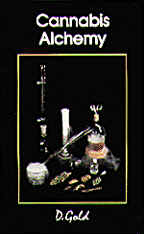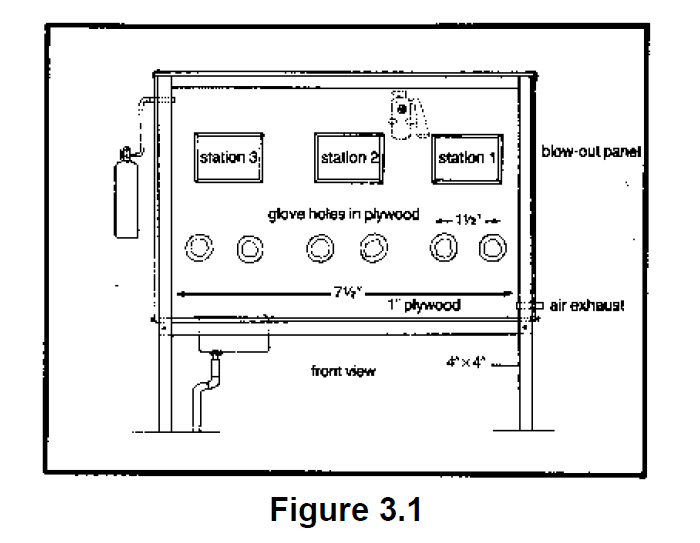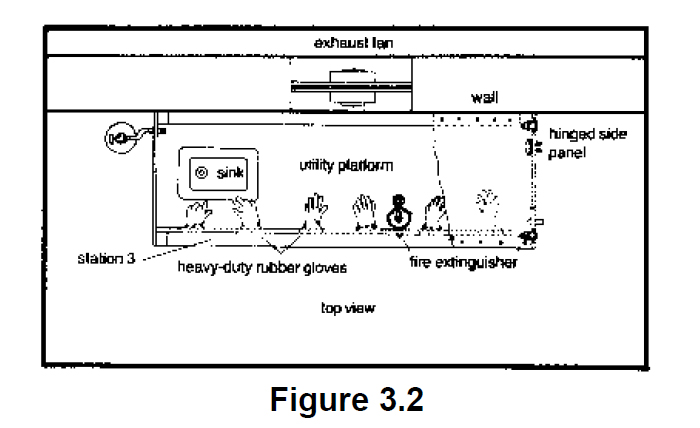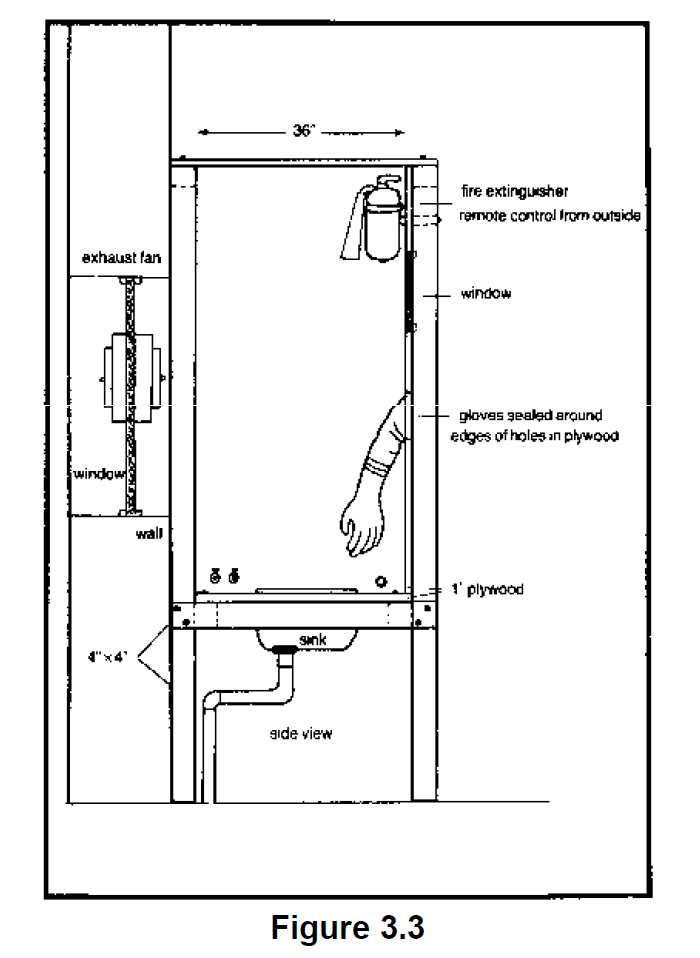
Cannabis Alchemy
by D.Gold
Building a safety box in which to convert high-rotating THC to its acetate
Because this conversion utilizes a very dangerous chemical, acetic anhydride, a safety box is constructed in which to perform this operation. This places a shield between the chemist and the apparatus, and the operation takes place in a separate atmosphere. The fumes from heated acetic anhydride are very flammable and poisonous. Inhalation of the fumes is a most unpleasant and dangerous experience, so a glove box protects the operator from any contact with the fumes. Acetic anhydride is so difficult to handle safely that it is a necessity to use standard laboratory equipment and procedure. The reaction is monitored and controlled from outside the box by observing the equipment through a safety-glass window and manipulating the apparatus with long gloves sealed to the shield. The box is equipped with an adequate exhaust fan with a sparkless electric motor to quickly evacuate any fumes that arise while transferring solutions or from a spill or other mishap. A fire extinguisher is mounted inside the box. In case of fire or explosion, the chemist is protected by the thick front piece of the box and by its structural design. The box can also be used for any other chemical operation requiring an artificial atmosphere to avert fire or explosion.
An artificial atmosphere is created by replacing the air in the sealed box with anhydrous nitrogen gas. This makes flame or combustion (oxidation in general) impossible. The nitrogen is introduced into the chamber through an opening in one side, near the top of the box. The displaced air is removed through a valve near the bottom of the opposite end. Success here is determined by attempting to strike a match inside the box. When oxygen has been removed, this becomes impossible. The exhaust fan is then used only when it becomes necessary to evacuate the atmosphere in the box.
The three stations are utilized as follows: The equipment and bottled chemicals are put into the right-hand side of the box by lifting the hinged side piece. The apparatus is prepared at this station and operated in the middle at station two. The bottles are opened at station one, using the gloves, from the outside of the box after the side flap is closed and the atmosphere has been replaced with anhydrous nitrogen gas. The operator need never be exposed to the dangerous chemicals except within the controlled atmosphere of the box.
Diagrams showing details of construction are shown below:



The side walls of the box are made of thin plywood and hinged at the top. This serves two purposes: access to the box is available from both ends, and in case of explosion, the force would be expended through the side panels, while the thick, reinforced front boards protect the chemist.

